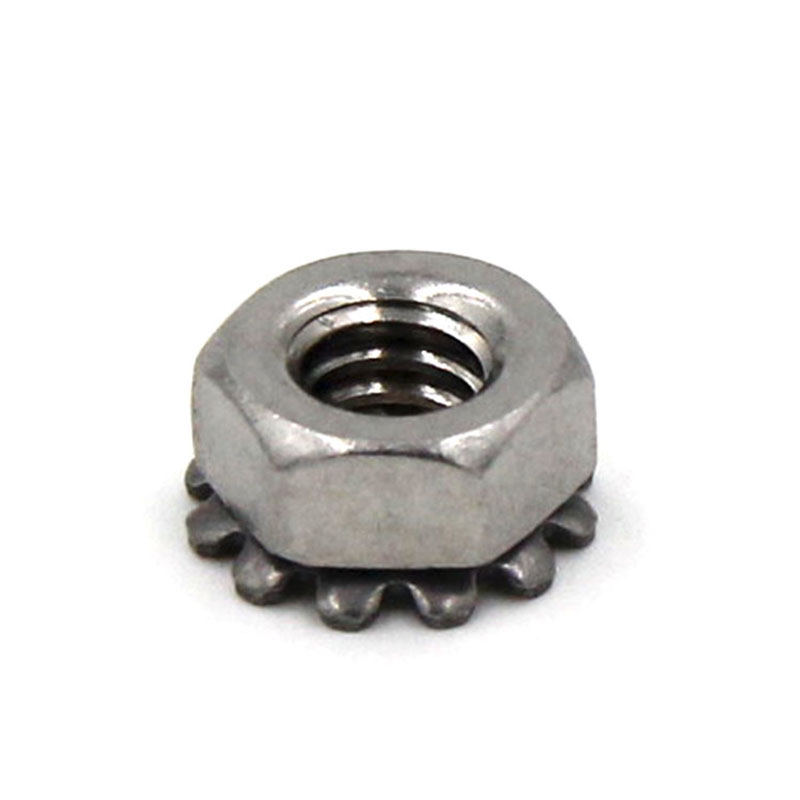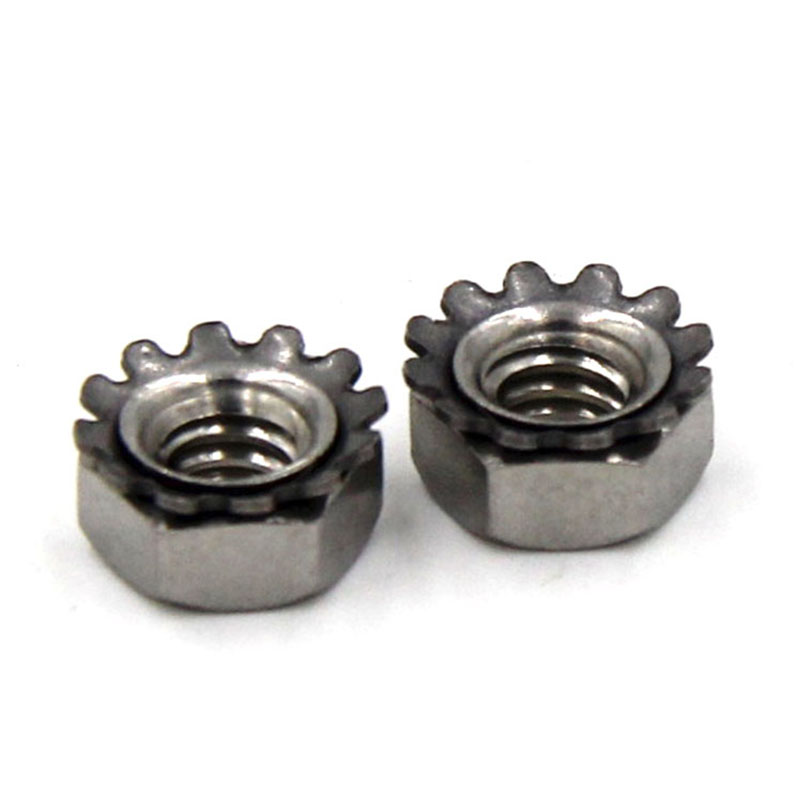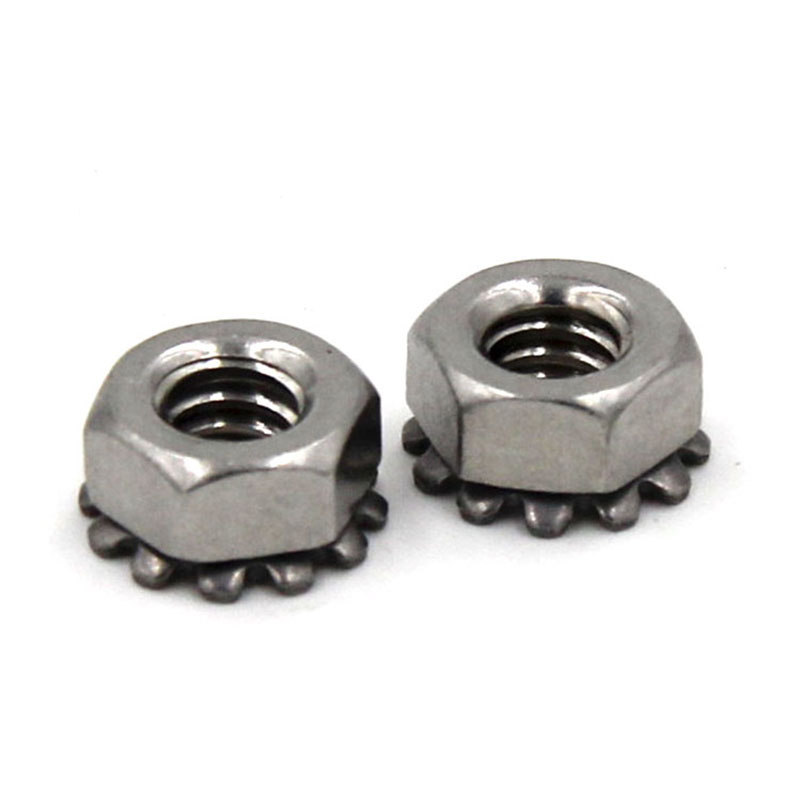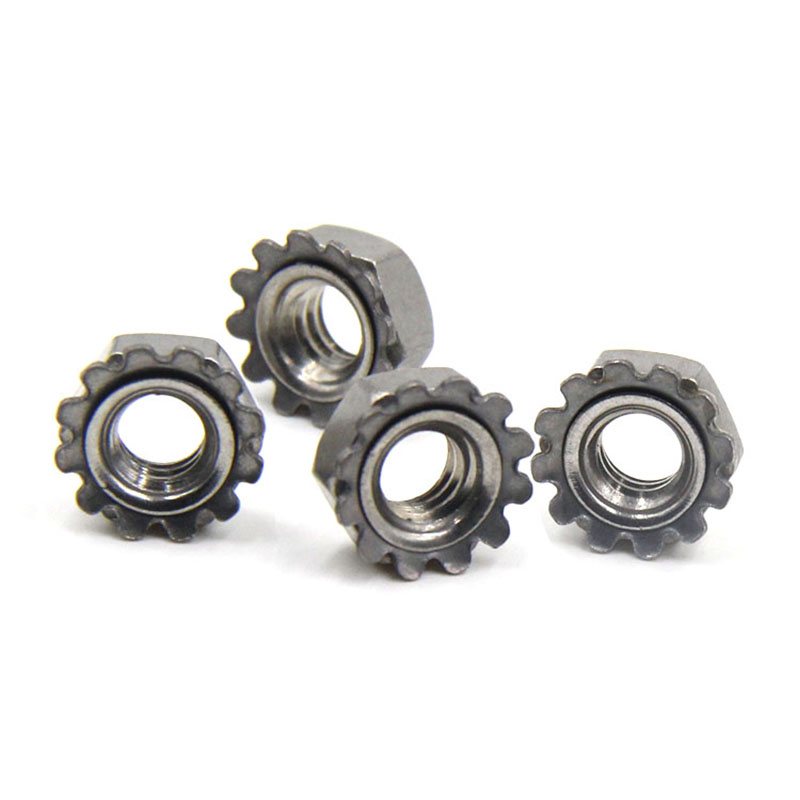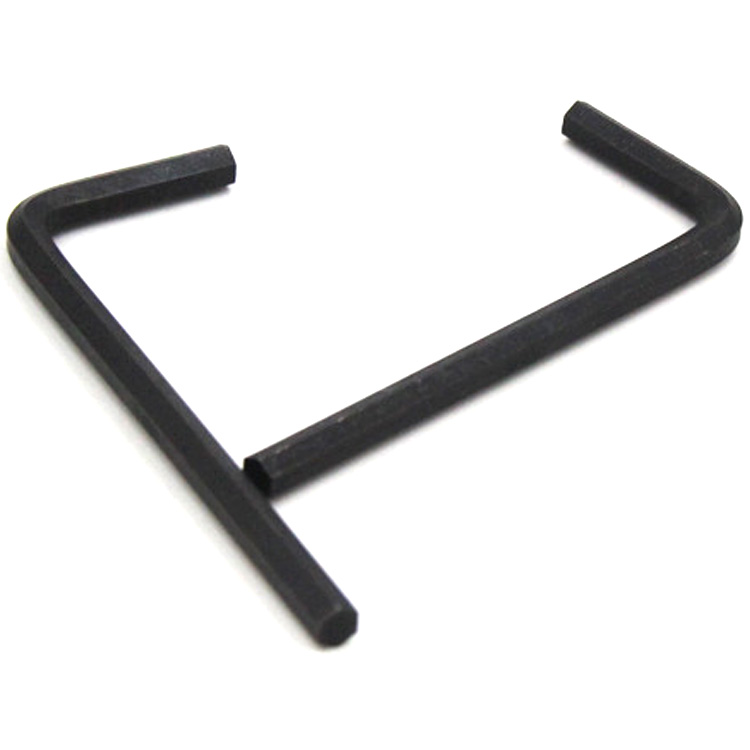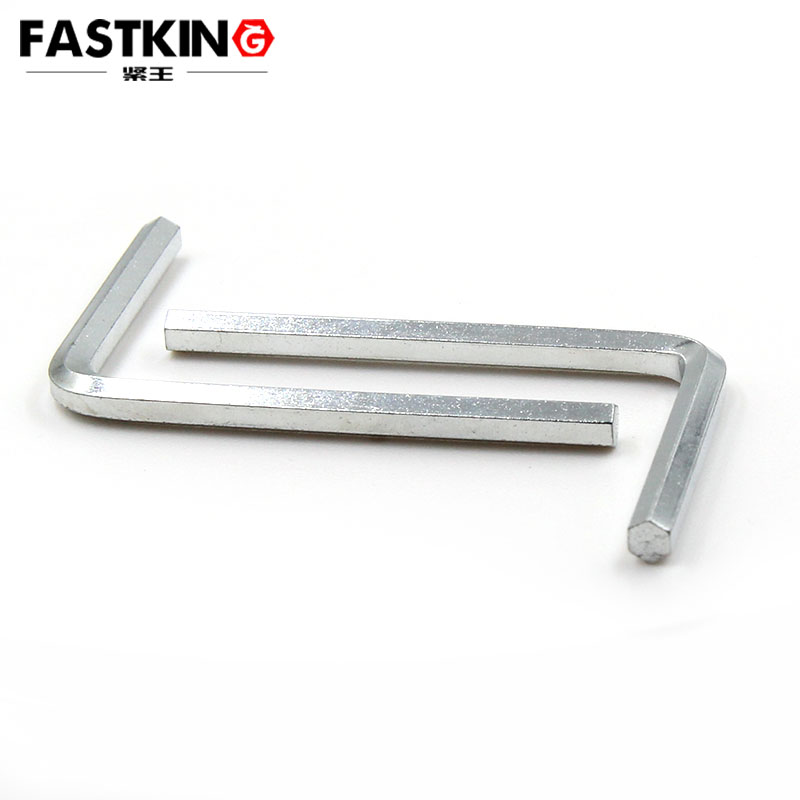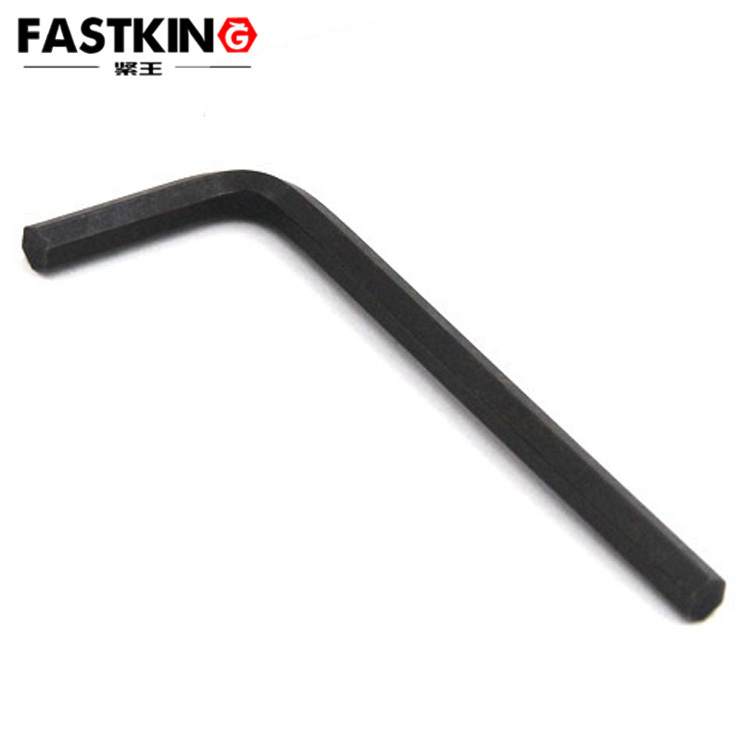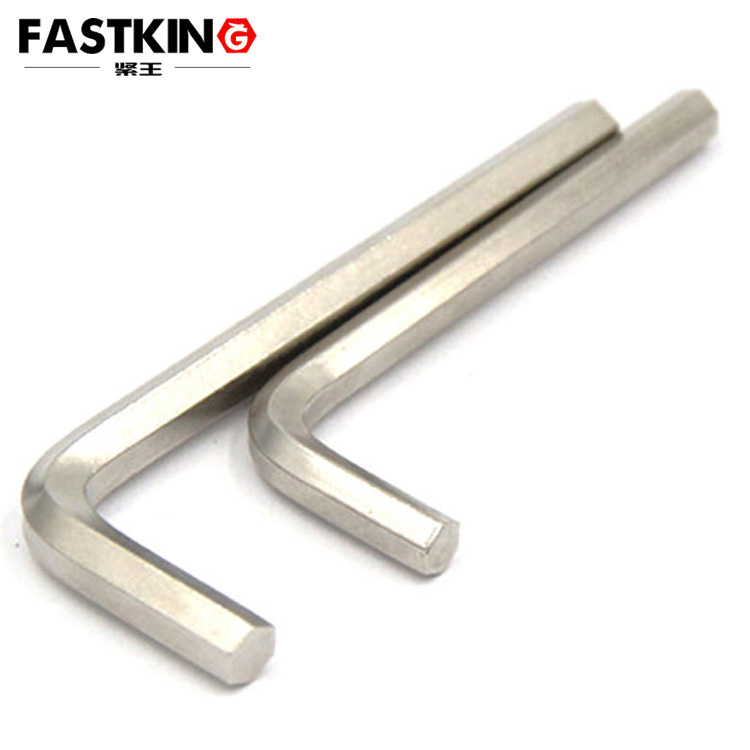- small screw,micro fastener,mini screw
- 0756-8586520
304 stainless steel K-nut with toothed nut multi-tooth nut M3~M8
- Product description:Multi-tooth nut with toothed nut
Among the diverse family of mechanical fasteners, the K-type nut has become a "main force" in coping with harsh working conditions such as vibration and impact, thanks to its unique anti-loosening design. This nut, named with the letter "K", does not derive its name merely from its appearance, but more from the "Key-level" connection reliability brought by its core structure. It is widely used in fields with extremely high requirements for connection stability, such as rail transit, construction machinery, and wind power equipment, and solves the industry problem of loosening and failure of traditional nuts through precise design.
The most distinctive feature of the K-type nut lies in its innovative anti-loosening structure. Different from the single thread self-locking of ordinary hexagonal nuts, it usually adopts a "double-bevel wedge" design — a set of wedge surfaces with different inclination angles are arranged on the internal thread section of the nut. When matched with the supporting K-type bolt, the thread teeth of the bolt form a tight engagement with the wedge surfaces of the nut. Observed from the cross-section, the thread profile of the K-type nut presents an asymmetric structure: the load-bearing surface adopts a smaller inclination angle (generally 3°-5°), while the non-load-bearing surface adopts a larger inclination angle (usually 15°-20°). This asymmetric design is no coincidence, but a precise calculation based on the principle of mechanical friction: the smaller inclination angle of the load-bearing surface can greatly increase the positive pressure between the threads and enhance the static friction force, thereby improving the anti-loosening effect; the larger inclination angle of the non-load-bearing surface facilitates the quick screwing-in of the nut during installation, balancing the anti-loosening performance and assembly efficiency.
From the perspective of working principle, the core advantage of the K-type nut lies in its "wedge force-increasing anti-loosening" mechanism. When equipment is in a vibrating or impact environment, traditional nuts tend to produce relative displacement due to the gap between threads, and then gradually loosen; however, during the vibration of the K-type nut, the bolt will be slightly stretched under the action of external force. At this time, the wedge surfaces of the nut will form a "wedging" effect with the thread teeth of the bolt — the slight displacement of the bolt will instantly increase the positive pressure between the wedge surfaces, and the static friction force will increase accordingly, forming a reverse locking that "becomes tighter as it vibrates". Taking the rail transit field as an example, trains continuously bear the impact and vibration caused by rail joints during operation. If ordinary nuts are used at the carriage connection parts, regular inspection and tightening are required, otherwise potential safety hazards may occur; while the K-type nut, relying on its wedge anti-loosening structure, can maintain connection stability in a long-term vibration environment, greatly reducing the maintenance frequency and ensuring the safe operation of trains.
The application scenarios of K-type nuts cover multiple industries with strict requirements for connection reliability. In the field of construction machinery, the boom connection parts of equipment such as excavators and cranes need to bear huge dynamic loads and frequent vibrations. K-type nuts can effectively resist the loosening risk caused by load changes and avoid equipment failures due to connection failure; in wind power equipment, the connection between wind turbine blades and hubs is exposed to the outdoors for a long time and needs to cope with strong wind impact, temperature changes and corrosive environments. K-type nuts made of corrosion-resistant materials (such as 316 stainless steel) can not only prevent loosening through the wedge structure, but also resist the erosion of harsh environments, ensuring the long-term stable operation of wind turbines; in the connection of automobile chassis, K-type nuts can be used in key parts such as suspension systems and drive shafts to cope with the bumps and vibrations during vehicle driving and improve driving safety.
The processing technology of K-type nuts has strict requirements for precision, especially the processing accuracy of the wedge surfaces, which directly affects the anti-loosening performance. The raw materials usually use high-strength alloy steel (such as No. 45 steel, 35CrMo). After cold heading forming, special CNC milling machines are required to process the wedge surfaces, ensuring that the inclination angle error is controlled within ±0.1°, and the surface roughness of the wedge surfaces reaches below Ra1.6μm to ensure tight fitting with the bolt threads. Some high-end K-type nuts also undergo surface treatment, such as Dacromet coating and hot-dip galvanizing, which not only improve the rust resistance, but also further optimize the friction coefficient between threads and enhance the anti-loosening effect. In the quality inspection link, in addition to conventional dimension inspection and hardness testing, a "vibration loosening test" is also required — after assembling the K-type nut with the bolt, it is placed on a vibration test bench that simulates actual working conditions. After a specified number of vibrations, the pre-tightening force loss of the nut is detected to ensure that it meets the industry anti-loosening standards.
With the development of industrial equipment towards large-scale and high-load directions, K-type nuts are also constantly upgrading and iterating. On the one hand, customized K-type nuts have gradually become a trend to meet the special needs of different industries, such as high-pressure resistant K-type nuts designed for deep-sea equipment and high-temperature resistant alloy K-type nuts developed for high-temperature equipment; on the other hand, the combination of K-type nuts and intelligent monitoring technology has also become a new direction. Some enterprises try to embed micro pressure sensors inside the nuts to monitor the pre-tightening force change of the connection part in real time. When the pre-tightening force loss reaches the threshold, an early warning is issued in time to provide data support for equipment maintenance and further improve the safety and intelligence level of the connection system.
As an "anti-loosening strongman" in the field of mechanical connection, the K-type nut redefines the anti-loosening standard of fasteners with its innovative structure. It not only solves the problem of loosening of traditional nuts under harsh working conditions, but also becomes a key link to ensure the safety of industrial equipment and improve operation efficiency. In the modern industrial system pursuing high reliability and low maintenance costs, K-type nuts will surely play an important role in more key fields and promote the development of mechanical connection technology towards higher precision and better performance.

